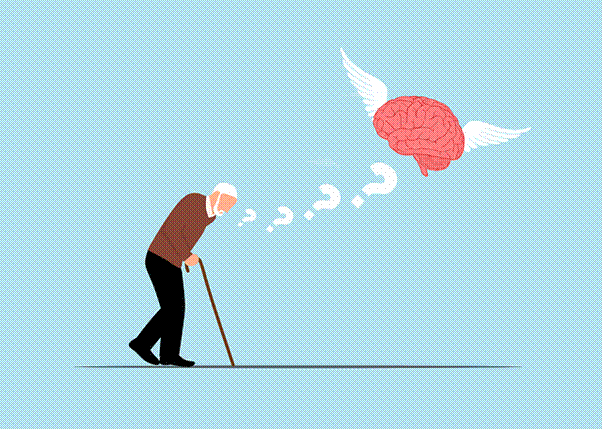Our ability to remember is one of the most remarkable features of the human brain. Memories do not exist in isolation; instead, they are connected through intricate networks known as memory chains.
Table of Contents
These links allow us to recall experiences, connect past events with the present, and use knowledge to plan for the future. Understanding how memory chains form, function, and influence behavior provides valuable insight into learning, decision-making, and even emotional well-being.

What Are Memory Chains?
Memory chains are networks of interconnected memories that link experiences, emotions, and knowledge. For example, remembering your first day at school may trigger a series of connected memories: the sound of the classroom bell, the feeling of nervousness, or the face of your first teacher. Each of these elements forms part of a broader chain that allows the brain to recall related experiences. These connections make memory more dynamic and meaningful, enabling us to draw lessons from the past.
The Science Behind Memory Chains
Neuroscientists explain that memory chains are formed through synaptic connections between neurons. When experiences are repeated or reinforced with strong emotions, the connections between neurons become stronger, creating durable memory links. This process, known as synaptic plasticity, ensures that frequently accessed memories remain more vivid and accessible. The brain relies on these chains to store, organize, and retrieve vast amounts of information efficiently.
Types of Memory Chains
Different forms of memory chains exist depending on the nature of the memories being linked.
- Episodic Chains – Personal experiences tied to specific events, such as a birthday party or a family trip.
- Semantic Chains – Knowledge-based links, like connecting the word “apple” with “fruit” or “nutrition.”
- Emotional Chains – Memories linked through feelings, such as associating a particular song with happiness or sadness.
- Procedural Chains – Skill-based memories, like riding a bike or typing on a keyboard, built through repeated practice.
These categories highlight the versatility of memory chains in shaping both thought and behavior.
How Memory Chains Influence Learning
Education and skill development rely heavily on memory chains. When new information is tied to existing knowledge, it becomes easier to understand and retain. For example, learning a new language often involves connecting unfamiliar words with known ones in the native language. Teachers and learners who recognize the role of memory chains can design strategies that strengthen connections, making the learning process more effective and long-lasting.
The Role of Emotions in Memory Chains
Emotions act as powerful anchors within memory chains. A joyful event, such as a graduation ceremony, may remain unforgettable because of the emotions associated with it. Similarly, negative experiences like a failure or accident may become deeply ingrained due to emotional intensity. Emotional memory chains often shape personality traits, decision-making, and coping mechanisms, proving how closely memory and emotion are intertwined.
Memory Chains in Daily Life
In everyday situations, memory chains guide behavior and decision-making. For instance, when choosing a meal, one might recall the taste of a favorite dish, linking it to past enjoyable experiences. In relationships, remembering acts of kindness or conflict creates chains that influence how we interact with others. These memory-based patterns help us navigate life with greater consistency and understanding.
Breaking and Rewiring Memory Chains
Not all memory chains are beneficial. Negative or traumatic chains can lead to anxiety, stress, or harmful behavior patterns. However, through practices like cognitive-behavioral therapy (CBT), mindfulness, and positive reinforcement, it is possible to weaken unhelpful chains and build healthier ones. For example, someone who associates public speaking with fear can rewire their chains by gradually practicing and pairing the experience with positive feedback.

Memory Chains and Technology
Modern neuroscience and artificial intelligence research are increasingly focused on replicating memory chains. Machine learning algorithms, for example, use associative networks that mimic how the human brain links information. Additionally, brain-mapping technologies are helping scientists understand how memory pathways are structured, offering potential breakthroughs in treating memory disorders such as Alzheimer’s disease. These advancements highlight the importance of studying memory chains not only for human development but also for technological innovation.
Strengthening Memory Chains for Better Living
Improving memory chains can enhance productivity, learning, and overall well-being. Effective strategies include:
- Repetition and Practice – Reinforcing information through frequent review.
- Visualization Techniques – Creating mental images that connect ideas.
- Storytelling – Turning facts into narratives that form stronger memory links.
- Healthy Lifestyle Choices – Adequate sleep, nutrition, and exercise support brain health.
- Mindfulness and Meditation – Practices that increase focus and enhance emotional balance.
By consciously cultivating positive memory chains, individuals can unlock their full potential in both personal and professional life.
Conclusion
Memory chains are the invisible threads that weave our experiences, knowledge, and emotions together. They shape how we learn, remember, and respond to the world around us. While some chains provide strength and growth, others may require rewiring to promote healthier outcomes. By understanding and harnessing the power of memory chains, individuals can enhance learning, improve relationships, and create a stronger sense of identity. Ultimately, mastering these connections allows us to transform memory into a tool for growth and resilience.